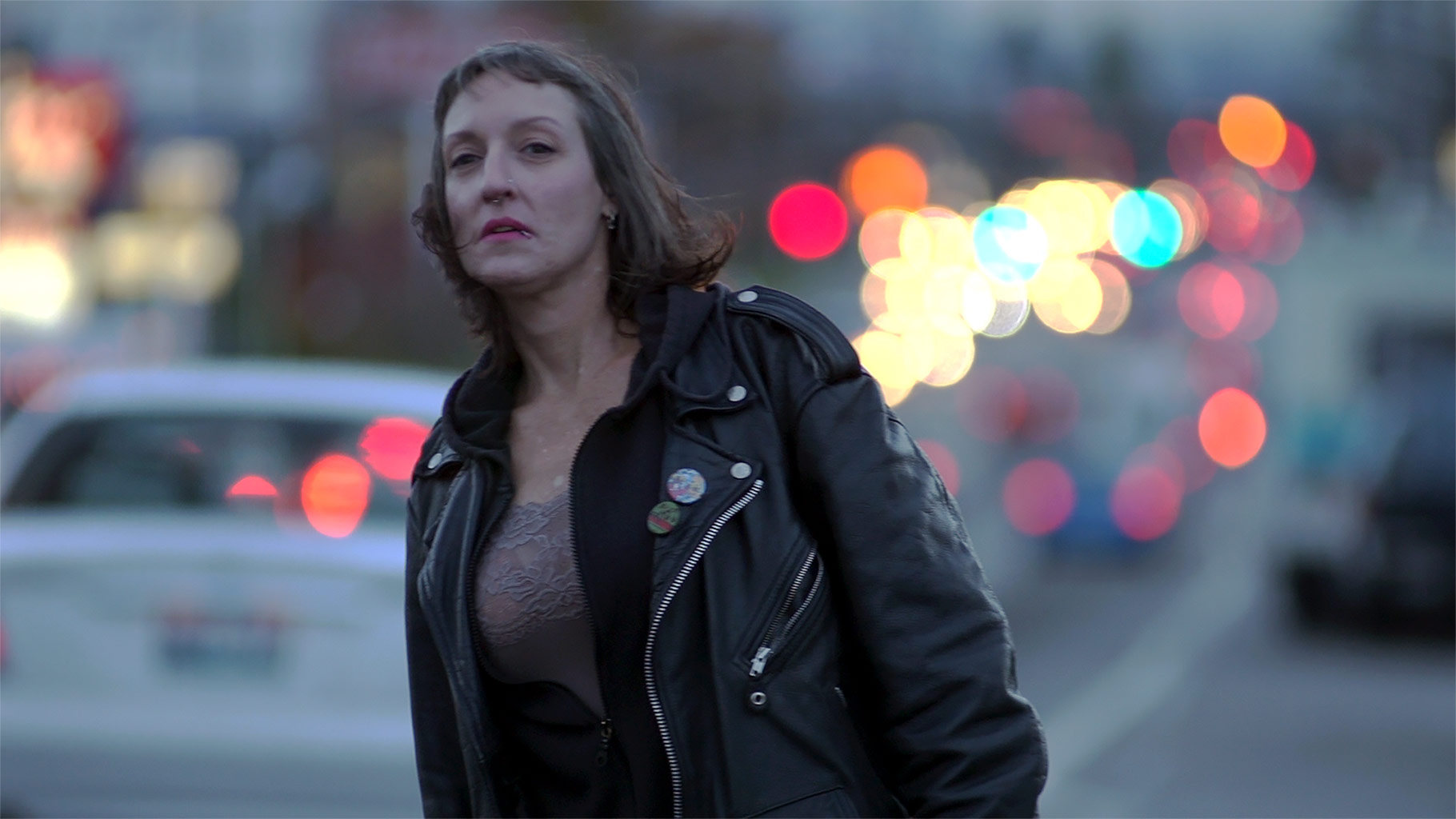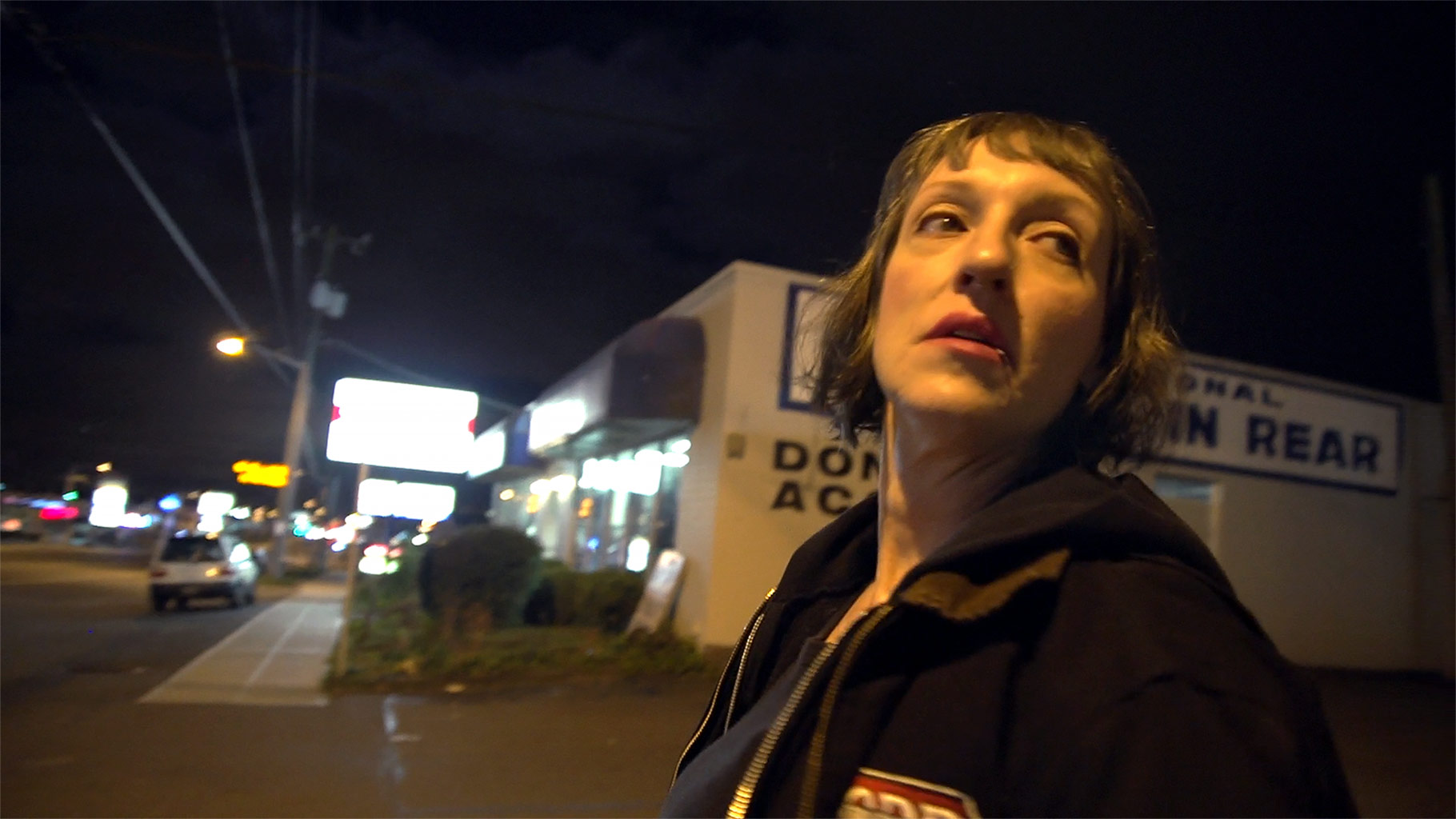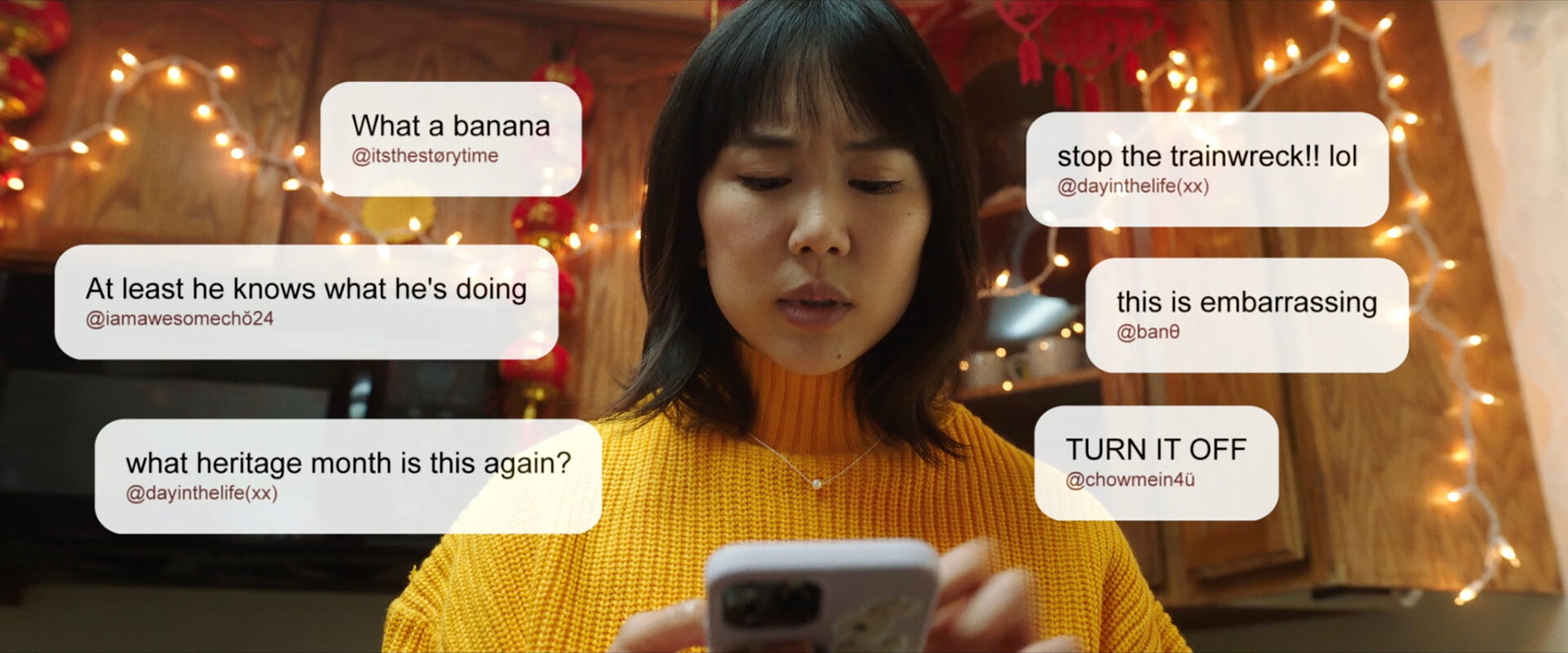
“I was coming out of working on the film Zoo (2007), and I was looking for my own project. I had a fascination with Aurora Avenue and a sense that there was something more going on than what you could see on the surface,” Levine says. “At the time, I was living in the Fremont area, and it just seemed like such an idealistic, neo-hippie neighborhood. Then the Aurora Bridge is running through the neighborhood, and during that time, there were a lot of suicides from the bridge, and so it was just bringing a shocking realization [that] there were two very different parallel worlds that were basically right next to each other. Aurora is the Seattle that we don’t see on postcards.”
The project didn’t come together in 2009, though, when Levine met Laughn Elliott, the self-described “Mayor of Aurora.”
“He was disarming and welcoming and was the first person who was just kind of [like], ‘Welcome to this world; there’s nothing to be afraid of,'” she recalls. “That was the initial entry point, so then I started filming over time, late 2011, with [cinematographer] Gabriel Miller observationally. It was all centering around people who knew Elliott.”


The Quotidian Side of Addiction
Sweetheart Deal‘s four subjects — Krista (formerly Amy), Kristine, Sara, and Tammy — brim with wry humor and startling honesty about “being dopesick” and “turning tricks.” In the decade or so of filming between 2011 and 2021, they splinter off then reconnect, make amends and give apologies, all while being pulled relentlessly back into Aurora’s undertow. Each cycles in and out of Elliott’s RV, gradually shifting from casual acquaintances to close friends.
Rather than focusing on the glittery glamour of hard partying, Sweetheart Deal captures the quotidian side of addiction with shots of heroin needles strewn about in grungy motel rooms. In one scene, Krista goes through violent withdrawals while other women chat idly in Elliott’s trailer. Sara sums up the women’s boredom with addiction when she complains, “I’m sick of being sick.” All seem equally aware that as much as sex work funds their drug use, the “rapture” of a high also makes the indignities and dangers of the work bearable. In the blunt economics of Aurora, three $60 blowjobs in a parking lot will pay for a day’s supply of heroin.
Perhaps no one better embodies this self-awareness than Kristine, a wise-cracking out-of-work welder. Her enthusiasm upon finally getting a job offer is poignant as she says, while surrounded by sparks and wires, “I know that this piece of work is going to outlast me.” Yet following a faked urine sample, she reports matter-of-factly that she got fired for being high on the job. Self-awareness alone is no match for addiction, and the subjects’ lives orbit around opioids.
“If you know the trajectory of a day in the life of someone who has any kind of opioid addiction, a lot of it is planning around dope sickness,” she says. “A lot of it is anticipating the dope sickness to make sure you have enough heroin or whatever it is to ‘get well.’ With the women that we were shooting with, you didn’t see a lot of that nodding out behavior that you might see in the movies or on the streets sometimes. But they call it ‘getting well’ — having enough in the morning to do a shot so they get back to normal. Because once you develop the addiction, you need it just to get back to feeling normal, or it’s like the worst flu of your life. And it gets progressively worse every hour that you don’t have [it].”

Real Refuge & False Refuge
Sweetheart Deal begins within the radius of Elliott’s RV before slowly expanding its focus to encompass its subjects’ home lives. In one scene, Tammy tries to convince her gruff Montana cowboy father that her “lifestyle” is safe while her mother watches mutely. The dynamic of a stern father and petulant child is reminiscent of high school, but the concerns couldn’t be more adult: sex and finances. Although they kicked her out when she was twelve, Tammy now supports her parents financially. Exasperated, Tammy retires to the bathroom to smoke some heroin and take a call from a client, venting to the camera, “If I’m not out there, their electric bill doesn’t get paid.” This scene sharply reveals the grind of feeding both your addiction and your family.
By contrast, Krista regards her understanding, well-off family with a painful nostalgia. Newly sober, she surveys a wall of framed portraits from her childhood. In her senior photo, she looks pensively at the camera with perfectly coiffed hair, the vision of a straight-A student. Yet at the time the shot was taken, she was just beginning to use drugs, and that photo marked her last moment of being a “functional member of society.” When Krista tearfully hugs her mom while wearing sneakers and a bright pink backpack, it’s like she’s regressing to a younger self from before the drugs took hold.
“Everybody who’s out there on Aurora: you don’t know what their background is,” says Levine, who felt it was important to highlight the disparate backgrounds of these women, but also their solidarity and similarity. “They could come from a family of millionaires or they could come from a life of poverty. Once you get out there, [with] the intensity of what you have to deal with every day, just trying to survive there — everybody’s on an equal playing field. Nobody cares where anybody else came from. So that was something that was surprising and interesting and sad. Even people who came from a better-off background and had more opportunities to go into rehab more times and things like that over the years — they still very often fall back into the addiction.”
Amidst the degradation of life on Aurora, Elliott seems to offer a refuge. Though cramped and dimly lit, his RV functions as a soup kitchen, hotel, and counselor’s office. In an interview with The Seattle Times reporter Christine Clarridge early on in the film, he speaks about his encyclopedic knowledge of Aurora’s sex worker population, estimating there are between one- and two-hundred he knows personally. A self-styled expert on the “monster” of addiction, he doles out advice on whether to take methadone or suboxone.

For years, nearly everyone, from sex workers to journalists, viewed Elliott as a kind of grizzled guardian angel, according to Levine.
“In the early days, he presented himself as the mayor. He was like, ‘I know everything about this area; I’m the person to come to,'” says Levine. “He parked right on the strip which a lot of people don’t do. He was profiled in Real Change back in 2012, and they did a heroic profile of him. He used to use the Burger King near his RV, as he would call it, his office, and he would go there and nurse a cup of coffee all day and sometimes be sitting with people that he knew. And [so] they called the article, ‘Having it Your Way.’ He was very proud of that, he talked about trying to help the homeless community and everything like that. He was trying to project a very positive image.”
Yet as Sweetheart Deal nears its end, hints of something sinister appear beneath this wise-man-of-the-streets facade. Many of Elliott’s comments tread the line between uncouth and just plain creepy. There are more than hints of possessiveness every time he asks for a kiss, or cajoles them to stay the night.
“I love him and I hate him at the same time,” says Sara. In a turning point, Sara, plagued with kidney failure, comes to stay with Elliott and kick her addiction for good. She seems to mostly sleep through the days while he watches Sherlock Holmes movies. After that, the perspectives fracture, to destabilizing effect.
According to Elliott, “Two weeks into kicking, Sara disappeared.” But as Tammy describes, she showed up to ensure that Elliott didn’t try anything sexual with Sara, only to hear him screaming from inside the RV. Sara was always his jealously guarded “favorite,” Tammy explains. By its end, Sweetheart Deal forces the viewer to question and recast everything they’ve seen, and to inhabit the perspective of women whose trust in strangers has been shattered more than once. Initially, they describe Elliott as “one of the good ones.” But ultimately, those words apply only to the women themselves.
Indeed, Sweetheart Deal may enter its subjects’ lives through the door of Elliott’s RV, but it doesn’t end there. The postscript is hopeful, with tales of new homes, jobs, and partners, all fiercely fought for and held onto.
“One thing that we just want to get across is: we consider this a collaboration with these women,” shares Levine, “I know from even the continued relationships with them how important it is to them that their stories be told, even if some of the stuff that is part of this world of Aurora is not comfortable and it’s not easy to watch. But it was really important to them that it’s not sanitized. They’re very proud of it. and they’re very proud of being part of this.”
Ω






